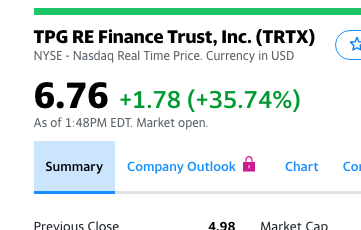Wednesday, April 15, 2020
Did You Know The "Dead" Language Sanskrit Was The Language Of Ancient Cambodia?
By
CNu
at
April 15, 2020
0
comments
![]()
Labels: History's Mysteries , Watchers
Tuesday, April 14, 2020
WaPo Throwing Shade On Shi Zhengli And The Wuhan Virological Institute
By
CNu
at
April 14, 2020
0
comments
![]()
Labels: Controlaspecies , gain of function , hegemony , narrative , Unadvertised Behaviors , WEE PHUK YU , WW-III
Washington Talm'Some Ole Bullshit - Fired Resigned Dept. Sec. Navy Mobly Talm'bout WW-III
By
CNu
at
April 14, 2020
0
comments
![]()
Labels: predatory militarism , The Great Game , WEE PHUK YU , What IT DO Shawty... , WW-III
U.S.S. Teddy Roosevelt Outbreak PROVED Just How Irresistable Nước Chấm Ever Was....,
By
CNu
at
April 14, 2020
0
comments
![]()
Labels: Ass Clownery , Controlavirus , essence , killer-ape , WW-III
Too Soon To Start Issuing "Seine Covid Papieren"
By
CNu
at
April 14, 2020
0
comments
![]()
Labels: Ass Clownery , Controlaspecies
Monday, April 13, 2020
Quiet As It's Kept The Kochtopus Is A Reservoir Of Managerial Intellect And Unified Cultural Vision
By
CNu
at
April 13, 2020
0
comments
![]()
Labels: agenda , alkahest , elite , establishment , Kochtopus , The Great Game , Unadvertised Behaviors , WEE PHUK YU
Little Man: Is Your Governor Being Urged Or Compelled To Tyranny?
By
CNu
at
April 13, 2020
0
comments
![]()
Labels: Controlaspecies , governance , individual vs. collective , professional and managerial frauds , WEE PHUK YU
Sunday, April 12, 2020
Controlaspecies: Gain Of Function Research And The Blame Game
“Mars will accuse Earth of using a bio-weapon. Earth will claim it was Mars. The Belt will blame the other two. It’s a good way to start a war and cover it up.”
“The hardest part of this game is figuring out who the enemy really is.”
By
CNu
at
April 12, 2020
0
comments
![]()
Labels: Controlaspecies , gain of function , The Great Game , WEE PHUK YU , WW-III
Can You Build An Architecture Of Oppression Without A Totally Debased Political Class?
By
CNu
at
April 12, 2020
0
comments
![]()
Labels: Degenerate , FAIL , institutional deconstruction , Peak Negro , political theatre , ShitShow
Edward Snowden: PanicDemic Building The Architecture Of Oppression
It seems that [coronavirus] may be the greatest question of the modern era around civil liberties, around the right to privacy. Yet no one's asking this question.
As authoritarianism spreads, as emergency laws proliferate, as we sacrifice our rights, we also sacrifice our capability to arrest the slide into a less liberal and less free world. Do you truly believe that when the first wave, this second wave, the 16th wave of the coronavirus is a long-forgotten memory, that these capabilities will not be kept? That these datasets will not be kept? No matter how it is being used, what’ is being built is the architecture of oppression.
By
CNu
at
April 12, 2020
0
comments
![]()
Labels: Controlaspecies
Saturday, April 11, 2020
Why Is The Microsoft Death And Infection Model So Exponentially Wrong?
By
CNu
at
April 11, 2020
0
comments
![]()
Labels: Controlaspecies , Unadvertised Behaviors
LITTLE MAN! We're Goople - And We're Here To Help (What Could Possibly Go Wrong?)
By
CNu
at
April 11, 2020
0
comments
![]()
Labels: Controlaspecies , tricknology , Unadvertised Behaviors , What Now?
Controlavirus: The Chinese Communist Party CCP Virus And The Great Blame Game
By
CNu
at
April 11, 2020
0
comments
![]()
Labels: Controlaspecies , The Great Game , WEE PHUK YU , WW-III
The Covid-19 Economic and Political Restructuring Narrative In The Light Of Preference Falsification
By
CNu
at
April 11, 2020
0
comments
![]()
Labels: unintended consequences , wake-up! , Weinstein
AG Bill Barr Say He Still Tryna Bring Coup Plotters To Justice
By
CNu
at
April 11, 2020
0
comments
![]()
Labels: .45 , Deep State , just-us , kayfabe
AG Bill Barr Don't Remember Voting For No Bill Gates
By
CNu
at
April 11, 2020
0
comments
![]()
Labels: common sense , Controlaspecies , Panic-demic , stay-in-your-lane
Friday, April 10, 2020
Little Man: Why Wall Street Gets A Bailout And You Don't!!!
By
CNu
at
April 10, 2020
0
comments
![]()
Labels: American Original , Collapse Crime , paradigm , parasitic , Peak Capitalism , shameless
Rape Culture: $6-10 Trillion Additional Federal Debt Taken On To Bailout Predatory Speculative Parasites
By
CNu
at
April 10, 2020
0
comments
![]()
Labels: American Original , Collapse Crime , paradigm , parasitic , Peak Capitalism , shameless
Gynocracy: Nominating A Demented Rapist Puts Democrat Contempt For Wymyn #MeToo On Fleek
By
CNu
at
April 10, 2020
0
comments
![]()
Labels: #YouToo? , Clintonian Imperative , Deeze Heaux... , NMFTG , Obamamandian Imperative , political theatre , What IT DO Shawty...
A New American Deal?
By
CNu
at
April 10, 2020
0
comments
![]()
Labels: Controlavirus , governance , What Now?
AIPAC Powered By Weak, Shameful, American Ejaculations
All filthy weird pathetic things belongs to the Z I O N N I I S S T S it’s in their blood pic.twitter.com/YKFjNmOyrQ — Syed M Khurram Zahoor...
-
theatlantic | The Ku Klux Klan, Ronald Reagan, and, for most of its history, the NRA all worked to control guns. The Founding Fathers...
-
Video - John Marco Allegro in an interview with Van Kooten & De Bie. TSMATC | Describing the growth of the mushroom ( boletos), P...
-
Farmer Scrub | We've just completed one full year of weighing and recording everything we harvest from the yard. I've uploaded a s...


